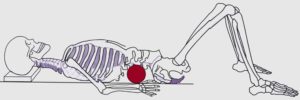
Ever Wonder Why Some Hockey Players Have Such Bad Backs?
I once was a hockey player. I played the game for roughly 17+ plus years and many of those years at a competitive level. To this day, it’s still my favorite sport and will always be my favorite sport, whether that is to watch or play. However, basketball has become a close second. Lately, I must admit ;). Anyways, in today’s post, I want to talk about why so many hockey players end up with back issues or back problems at some point in their life.
Firstly, I want to mention that it’s been two years exactly since I’ve laced up the skates and been on the ice. The reason being is because of my back issues, and I don’t want to risk any further problems to my back by playing hockey. Going through severe sciatica and not being able to do normal daily activities for roughly two years was enough.
The Sport of Hockey
Hockey can be a hazardous sport, and most people know this, just like any other sport, but what most people don’t know is how it can be ‘very’ dangerous to your lower back. When you look at the biomechanical features of playing the sport, your constantly in a slightly flexed spinal position, whether that’s when your skating or shooting a puck, etc. Moreover, when a player is putting their skates on and lacing them up, their constantly engaging in a poor spinal position, where the spine is completely bent. Not to mention, they may tie their skates up in this poor spinal position, roughly four to six times a day, especially if it’s a game day and there is a morning skate. By doing this, they’re constantly breaking down the tissues in their lower spine and potentially putting themselves at risk of injury. And that’s not to mention the poor sitting position that these players may engage in on the bench (e.g., bent over after a long shift = poor spinal position = greater injury risk). Furthermore, to make things worse, take a six foot four hockey player, the stress on his spine when he bends over is going to be much greater than someone that may be shorter than him. Also, we can make matters worse by adding in a poorly designed exercise program that may include exercises like sit-ups or any activity that may take the spine through a full range of motion. Ultimately, repeated flexion or spinal bending is what is going to cause an injury like a disc bulge or herniation to occur.
It’s not a surprise that players like Mario Lemieux, Marian Hossa, Jason Spezza, and Eric Fehr have had a disc or back-related issue over their career. Keep in mind Marian Hossa played with a herniated disc in the 2013 Stanley Cup Playoffs. He missed game 3, after suffering the injury in game two but would come back for games 4, 5 and 6. However, he was practically playing handicapped, and from experience, he was probably on severe painkillers.
I can tell you that’s it’s not fun suffering from any back injury, let alone a disc-related one. It will limit your performance, health and potentially your longevity.
So, now, the real question is.
As a Hockey Player, How Can You Avoid These Disc Related Injuries?
Well, first in foremost, it’s important to be educated about the topic. People and especially players need to understand what are some examples of poor spinal positioning and posture. From here, if players understand this, they can potentially implement this into their daily life and reduce the number of times they put themselves in poor postural positions. An example would be seen as tying your skates with a ‘neutral spine’ (straight spine), as opposed to a fully flexed spine. Ultimately, by doing this, we can reduce the amount of stress placed on the discs. Another thing strength coaches or athletic therapists can do is to teach the athlete’s how to brace their core correctly. By learning to brace the core correctly, we can create a stiffness that will ultimately add stability to the spine when we pick things up or bend over.
Furthermore, a proper strength and conditioning program should be followed by every athlete. This would potentially mean avoiding exercises like sit-ups, good mornings, leg presses, and incorporating more core stability exercises like bird-dogs, pallof presses, and various plank variations. By implementing more core stability exercise, we can add stability to the spine, reduce the injury potential and ultimately improve performance.
In conclusion, there is a lot that hockey players can due to ultimately avoid back injuries, and these are just a few examples I mentioned above. If you can follow these examples above or begin to learn about the spine, you can go a long way about having a healthy career and back
All the best
Remi












